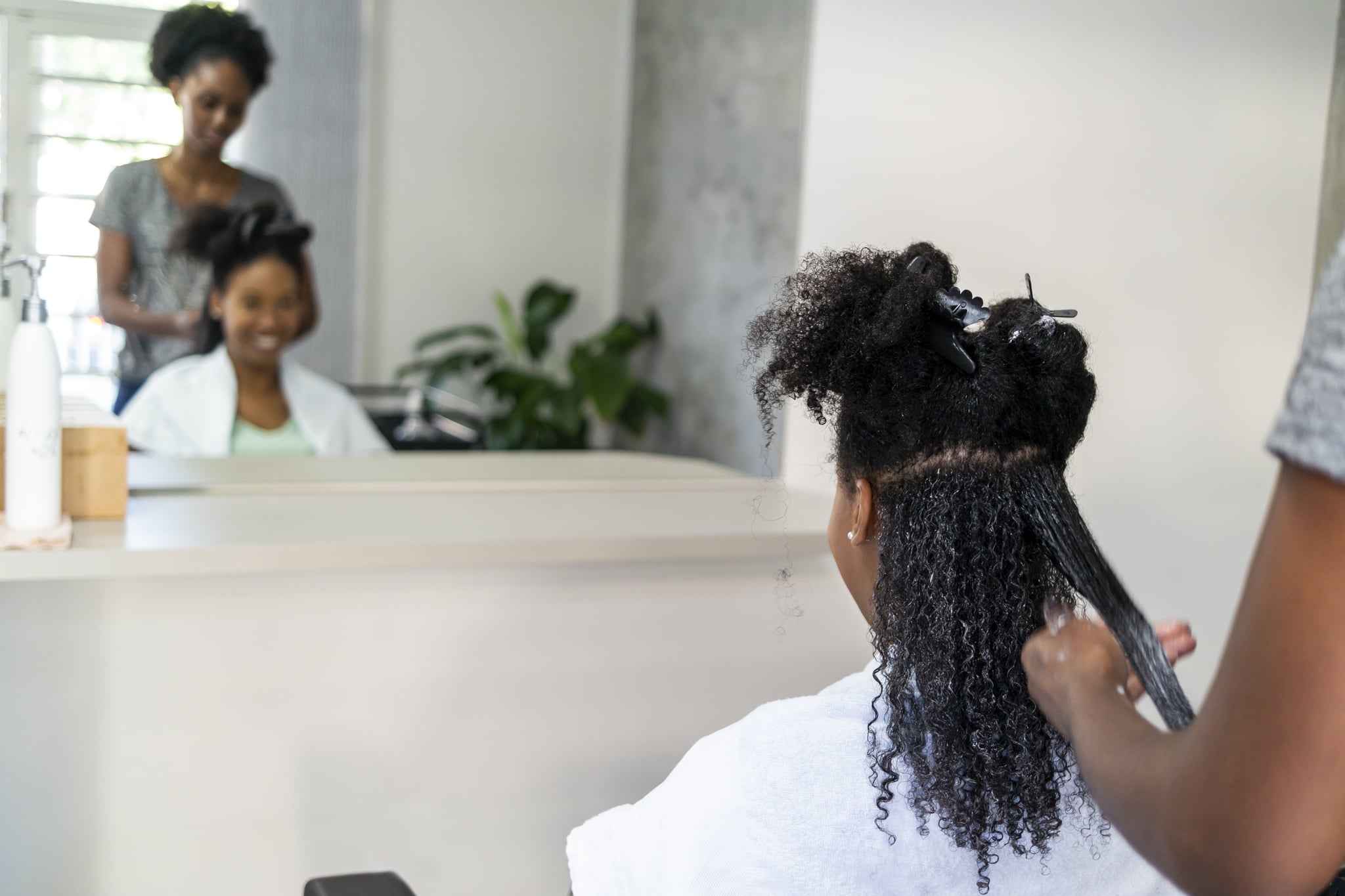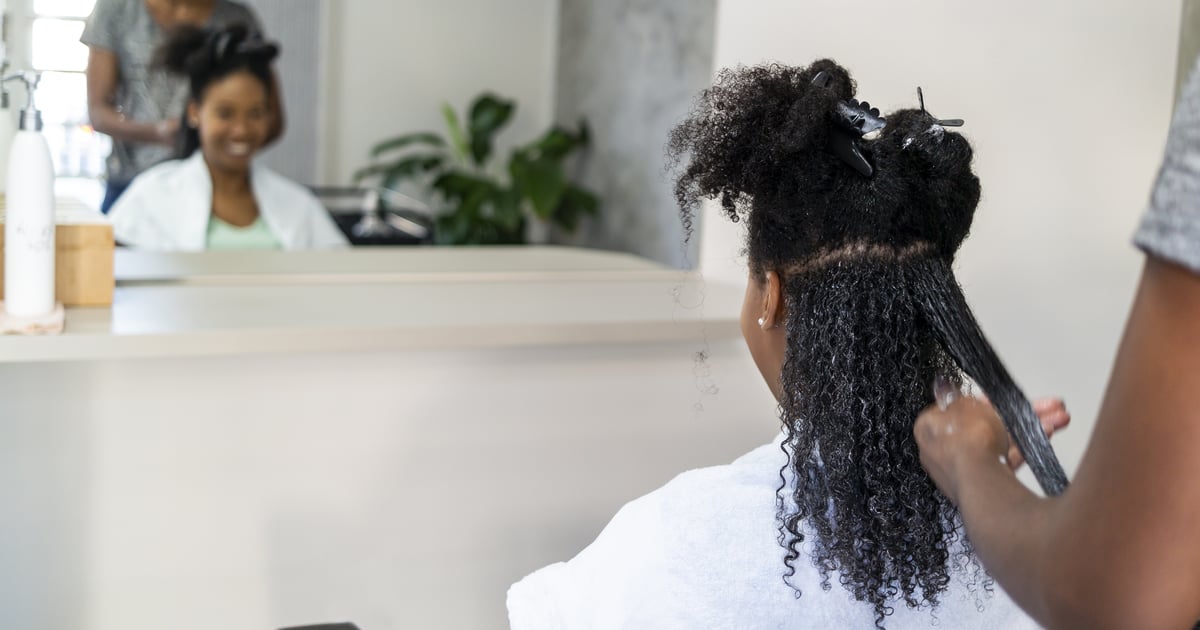 Image Source: Getty/wsfurlan
Image Source: Getty/wsfurlan
- There’s a debate on TikTok about the differences between relaxers and texture releases.
- Relaxers and texture releases are two treatments that straighten hair.
- A professional hairstylist breaks down what each treatment is, how long they last, and their cost and results.
If your TikTok page is also hyper-curated to feature all things beauty, then you may have come across a video from user Nellie Robert. In the clip, which details her experience getting a texture release and has now amassed more than 1.4 million views, Robert shows users the results of the treatment and cut, which resulted in her hair being bone straight and styled in a bob.
While the treatment results were undeniably fantastic, the video blew up with commentators questioning why she called the treatment a texture release and not a relaxer. User after user asked Robert if she misspoke, called the treatment a rebranded relaxer, and some even asked outright what a texture release is. So what exactly is a texture release?
“A texture release is essentially a smoothing system that has been specifically formulated for Afro hair types to achieve a more defined, elongated curl pattern,” editorial hairstylist Martika Carter tells POPSUGAR. “This treatment makes the hair easier to manage without chemically straightening it.”
As it turns out, there is an actual difference between texture releases and relaxers. So we asked Carter to break down everything you should know about the differences between the two hair treatments, as well as the best candidates for each.
Difference Between Relaxers and Texture Releases
Like texture releases, relaxers are a treatment that can straighten the hair. The main differences between the two, however, are how long the results last as well as the techniques that each require. “A texture release is semi-permanent and only lasts about eight to 12 weeks,” Carter says. “The relaxer, on the other hand, contains chemicals that permanently straighten the hair, making the process irreversible.”
Additionally, texture releases use the heat from a flat iron alongside heat-activated amino acids to straighten the hair. Relaxers rely on a wholly chemical process and straighten curls and coils by breaking down the bonds within the natural hair shaft.
Do the Results of a Texture Release vs. a Relaxer Look Different?
As for whether each treatment bears the same results, the answer is both yes and no. Texture releases and relaxers do straighten the hair, but it’s actually in the feel of the hair that you can really tell the difference.
Whereas the former will make your hair feel similar to when it is silk pressed, you’ll notice a significant difference with the latter. “The end results of a relaxer tend to leave the hair bone straight and feeling a lot finer,” Carter says. “This is due to the fact that its natural pattern has been broken down by the chemicals in the relaxer.” All the types of relaxers available on the market — lye, low lye, no lye, and thio relaxers — contain either sodium hydroxide or calcium hydroxide. These chemicals aid in stripping the hair’s natural texture and are the reason it may feel different post-treatment.
How Much Do Texture Releases and Relaxers Cost?
The cost of any service is dependent on where you live as well as the experience level of your stylist, amongst a host of other factors. In New York City, where Carter is based, a texture release service typically starts from $275 and goes up depending on the length and density of your hair. Based on the same factors, relaxers start at $150.
Which Is Better: Texture Release or Relaxer?
When it comes to figuring out which treatment may be best for you, Carter has some tips. “I’d only recommend relaxers to be used by individuals with more coily and resistant textures,” she says. “Your hair will be dense enough to be broken down while still maintaining a full, healthy look.”
On the other hand, while they can work for everyone, texture releases may be better for people with slightly finer hair textures. “I never recommend relaxers to clients with fine hair textures, because this will make the hair even finer and more prone to breakage and hair loss,” Carter says.
Now that you know the differences between texture releases and relaxers, you can be fully aware of your options should you want to get either treatment done. And if you are interested in either of them, be sure to book a consultation with your hairstylist before settling on an option. Whatever you decide, healthy hair should always be your stylist’s priority — and any good stylist knows that what works on one person may not necessarily work on another.
Source: Read Full Article

